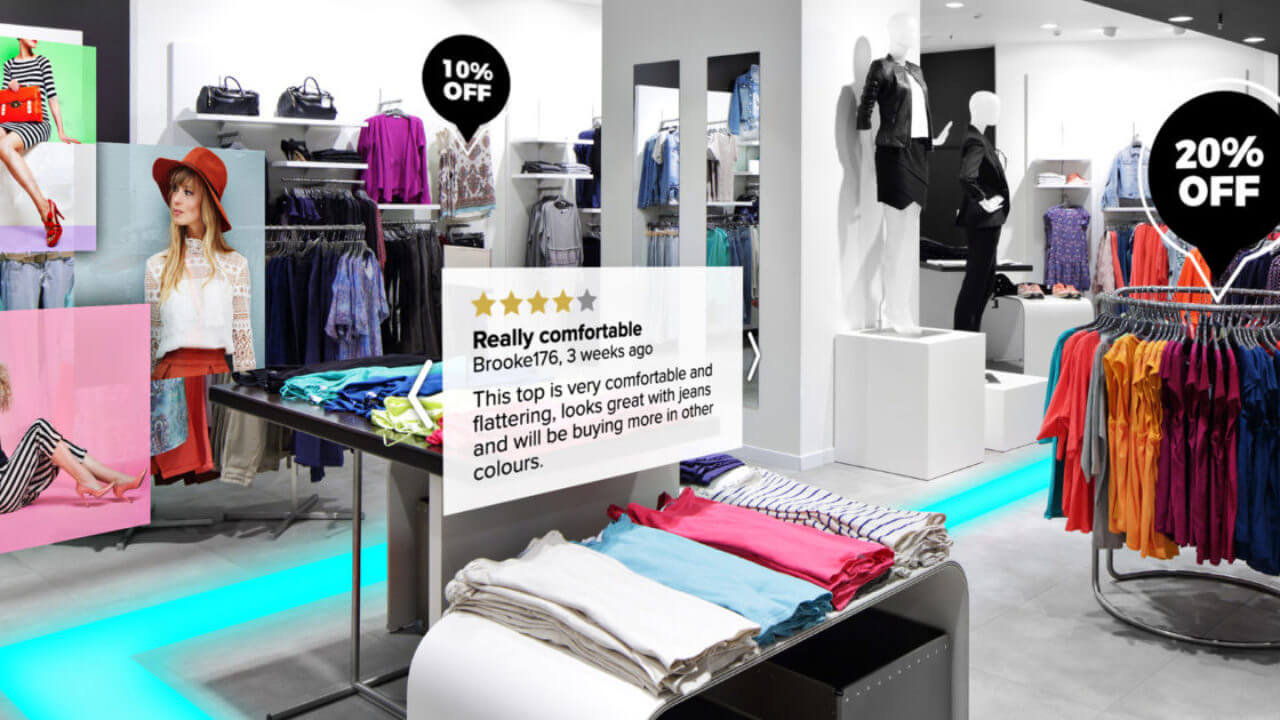Comments
- No comments found

Augmented reality (AR) burst onto the scene only a few years ago, and even then we were excited to see how this technology would evolve.
Fast-forward to 2021, and AR has seen widespread adoption in a variety of sectors, from education to retail.
Almost 70-percent of consumers expect retailers to pick up on AR and launch an app within the first two quarters of the year. Savvy marketers and retailers are already picking up on this growing trend, with many already offering an AR interface for their customers to make more informed purchase decisions on their product range.
Many retailers jumped all over the opportunity to use AR as a means to drive customer engagement and increase consumer interaction with their brand and products. As a result, AR tech has changed the way people shop and enhanced the retail experience for consumers.
Research shows that 61-percent of consumers prefer to shop at locations offering an AR experience, with 40-percent stating they were willing to pay more for the product over competitors with lower prices.
Here are a few examples of brands taking the quantum leap into the world of AR.
Through their mobile app, LCST, customers can select their favorite shoes for a virtual fitting. The app also creates engaging and interactive in-store signage and window displays using AR technology.
Lacoste intends to target the youth with their LCST app, and they’ve had a positive response, with more than 30,000 users engaging with 3D products on the platform.
This retailer collaborated with software solutions provider Holition and Augmented Retail Solutions to bring an AR experience to customers using a “magic mirror,” concept that allows customers to virtually try on makeup in an AR mirror before making their purchase.
Timberland decided to fit their change rooms with Kinect technology, in a strategic ploy to drive more foot traffic into their store. Customers stand in front of an AR-enabled camera that scans their body before projecting their image onto a screen.
Customers can choose to virtually try on any of the store's clothing to get an idea of fit and style, without physically fitting any clothes. Topshop partnered with AR Door to bring the same concept to their Moscow store.
This retailer partnered with Google Tango AR technology to bring consumers a new retail experience. Using the in-store navigation app, customers can create a shopping list and then have the software help them navigate their way through the store to find the items they need, creating the industry’s first indoor mapping AR app.
In the example above you can see the user being able to visualize an AR barbecue in their backyard to get an idea of what it would look like in the real world!
This furniture manufacturer produced an app that allows customers to overlay an AR interface to their phone’s camera. The customer selects a product and has the option to overlay the product on the image to see how it works in the room. For example, if you’re thinking about buying a couch, use the app to see how it looks in your living room, from multiple different angles, before you commit to a purchase.
Retailers offering AR apps to consumers remain at the forefront of consumer awareness, driving more engagement with their brand while increasing social proof through word of mouth. AR gives an edge to retailers, allowing them to help consumers save time and improve their decision making.
As we move into the post pandemic era, we can expect more retailers to jump on the AR bandwagon. However, those with first-mover advantage have the opportunity to stay leaps and bounds ahead of the competition, while increasing brand awareness in their market.
Leave your comments
Post comment as a guest